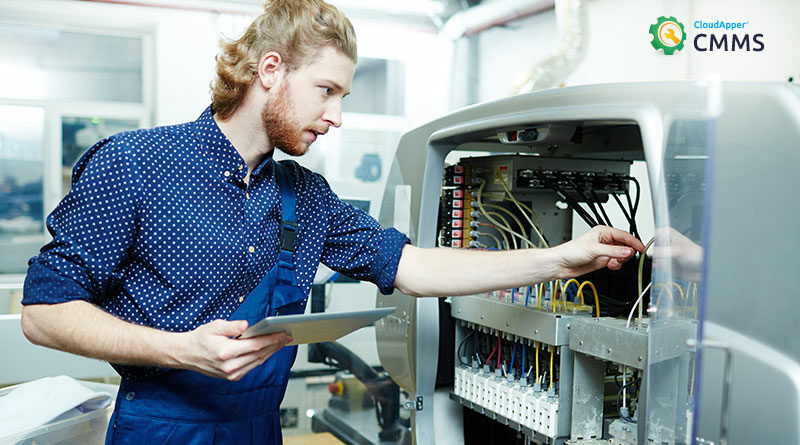Preventative Maintenance Checklist – A Simple Guide
Many modern processes today can be simplified with a good checklist. For example, baking a cake? Sure. Packing for a vacation? Yes, even that. If these relatively simple things can benefit from a checklist, so can much more complex procedures, such as preventative maintenance (PM) program. You are probably already familiar with preventative maintenance, the most efficient way to keep your assets up and running. One of the best practices in preventative maintenance includes following a checklist to ensure that all the employees focus on the same details.
When maintenance technicians need to work on your equipment, a preventative maintenance checklist provides standardized information for all the assets in your facility. It also provides a database of information for employees, management, and third-party contractors.
What is a preventative maintenance checklist?
A preventative maintenance checklist is a standard list of actions to complete and tasks to do before closing out a maintenance work request.
Most people have the habit of keeping checklists in their heads and then scanning through them to make sure they haven’t overlooked anything. Think about when you are leaving your office.
Oftentimes, I stand by the door and think to myself, “Have I got my car keys, phone, and wallet? Alright, everything is in order.”
However, the lists can get longer when you go to a grocery store. And, when it involves more complex operations that includes many steps and sophisticated equipment, it is best to have a detailed checklist in hand to ensure we’re doing everything right.
Why is a checklist important?
The gains are associated with speed and standardization. Even without specialized training, a preventative maintenance checklist ensures that the work is getting done the same way, no matter who is doing the work.
Instead of everyone trying to improvise in their own way, there is an established standard action that everyone follows. It makes the process much faster and easier.
Do this before developing a preventative maintenance checklist
Without putting in time and effort, you can’t generate a proper checklist. Additionally, you will need to do research and make detailed observations in the process of its creation. But first, you must lay the groundwork for universal documents, which should be comprehensive, clear, and correct.
Rushing through this part of the process will ruin your preventative maintenance checklist before it’s even developed. A lack of understanding of the equipment and how it operates isn’t the best way to ensure others will see to its care.
The first step should be to determine which of your assets needs preventative maintenance. Spending the time and energy to develop a detailed maintenance checklist for every mechanical object you see is not very efficient.
For example, a paperclip in an employee’s desk doesn’t need one; the HVAC system probably does.
After determining which of your assets require maintenance, inspect their condition. Develop a thorough report of the state of these assets and where they are in their life cycle. If the historical records look doubtful, include notes with that information as well.
Note: Facility management software or a computerized maintenance management system (CMMS) are the best tools to log historical records of equipment as well as current information.
Set standards for preventative maintenance and speak with operators to know how and when the assets perform at their peak. It will help you compile an inclusive and well-organized list.
As part of this process, obtain the original equipment manufacturer manuals (OEM). The majority of these can be found on the manufacturer’s website.
Following the OEM recommendations have proven to be effective in preserving assets at their peak working conditions and keeping your organization from annulling warranties.
You should be able to get a wealth of information from the manufacturer regarding preventative maintenance, such as:
- What should be checked?
- How often should it be checked?
- The best types of cleaning liquids or fluids.
- How to perform the maintenance?
- How to identify potential problems and warning signs?
With OEMs in hand, note anomalies in any piece of equipment or its parts. Operators and maintenance teams are indispensable in these areas.
Many large complex types of machinery have quirks and certain requirements regarding startup time, environmental conditions, and amount of lubricants.
Sometimes even duplicate equipment from the same manufacturer can have its own quirks, depending on its repair history, age, and after-sales services.
One of the most effective ways to organize a preventative maintenance checklist is by using facility management software or a computerized maintenance management system (CMMS). These tools centralize the information you gather.
Cloud-based solutions are more reliable and offer secure storage and better accessibility to all the employees who need them.
Examples of a Preventative Maintenance Checklist

In general, there are two kinds of PM checklists. Which are:
Pass-or-fail checklist
Some machine parts have an ideal condition. For example, a compressor should be running at an ideal operating temperature. A checklist might include instructions for checking the compressor’s actual temperature and comparing it to the standard temperature. It can either pass or fail. Other examples of pass-or-fail checklists:
- Record the strokes-per-minute machine-A is operating at. Is the duct temperature of Machine-A below 65-degree Fahrenheit? (Yes/Pass, No/Fail).
- Create a work request or schedule maintenance in your CMMS if you have marked No/Fail in the above example.
Step-by-step checklist
A step-by-step list will basically include instructions that are broken down into discrete steps. For example, a motor might require changing every 600 hours. A step-by-step checklist will instruct you on how to change the motor, from beginning to end.
Here are some examples of a preventive maintenance checklist grouped by categories.
Outside the Machine
- Check for leaks or a pool of fluids.
- Inspect the body for visual damage
- Clean debris from the body and any exhaust points.
- Check for cracks, chips, or debris in ground contact areas.
- Tighten and confirm hitch and attachments.
- Ensure the frame is in good shape.
- Examine fenders for dents or damage.
- Check if hinges or hooks have come loose.
- Check whether the equipment’s nameplate and asset tag are present and legible.
- Confirm if the hood latch is fastened well by pulling it.
- Check if lug nuts on tire rims are tightened.
Engine Compartment
- Remove dust and debris from any engine component, especially the radiator.
- Inspect hoses for cracks or leaks.
- Ensure that the battery connection is secure.
- Look at filters for oil, fuel, air, etc. (Replacing them is usually inexpensive and quick, but they cause costly damage when faulty and not changed regularly).
- Examine the battery cable.
- Examine cover and guards.
- Check all belts and moving parts, especially fans and alternators.
Fluids
Using the manufacturer’s operating manual, check for the correct amount of:
- Hydraulic oil
- Diesel fuel (if applicable)
- Gasoline (if applicable)
- Radiator coolant
- Brake fluid
- Diesel exhaust fluid (DEF)
- Transmission fluid
- Engine oil
While Machine Is at Rest
Before starting a machine or when the engine has cooled down, check for the proper functioning of these components:
- Mast chains
- Cables
- Sprockets
- Overhead guards
- Safety warnings, both visual and audial
- Charge in battery
- Water or electrolyte amount in the battery
- All fluid levels
- Axles and driveshafts
- Engine air cleaner trap
- Idler wheels
- The fuel tank is not damaged and has a cap in place
- Fuel sediment (for diesel engines)
Simplifying Preventative Maintenance and Managing Checklists
From the above examples, you can imagine how many pieces of paper you would need to create a simple checklist. The list can be longer if you have many machines. Moreover, papers can easily get lost or misplaced. And carrying papers around everywhere can be a real hassle.
Instead, you can use CloudApper’s facility management or CMMS software to maintain your checklists. Not only will you be avoiding the use of tons of paper, but you will also be able to streamline work requests and schedule maintenance on the go. And you will also be able to access the information anywhere on your mobile device.
Contact CloudApper today to request a free trial to learn how they can help your business thrive!











